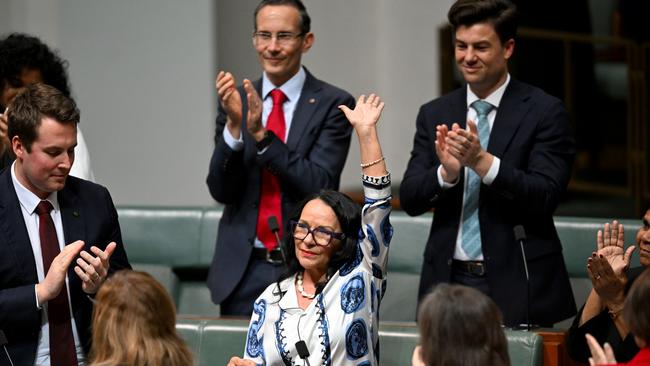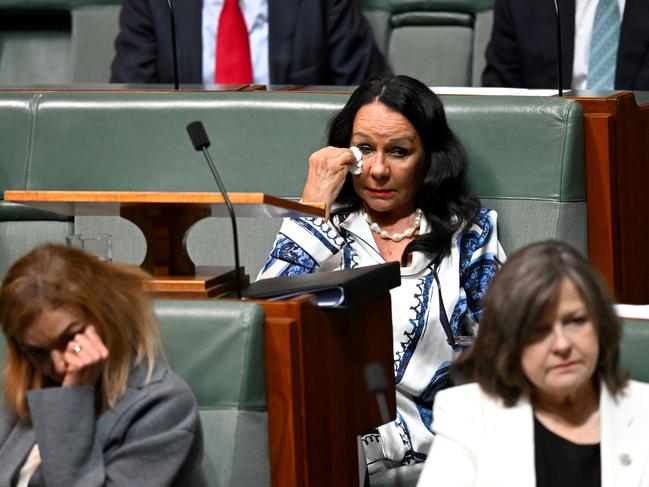‘False choice’: Linda Burney’s final say on divisive Indigenous voice argument
Former Indigenous Australians minister Linda Burney has dismissed the argument that ‘symbolic’ reconciliation must give way to ‘practical’ reconciliation.

You can now listen to The Australian's articles. Give us your feedback.
Former Indigenous Australians minister Linda Burney has dismissed the argument that “symbolic” reconciliation must give way to “practical” reconciliation, describing it as a false choice and an outdated concept.
Ms Burney’s emotional final speech in the federal parliament on Tuesday included a plea to both major parties to find bipartisanship on Indigenous issues.
She resigned as minister nine months after the emphatic defeat of the voice referendum that she had championed.
Ms Burney said she believed the failed bid to enshrine an Indigenous advisory body in the Constitution “will be looked on more kindly by history”.
“The referendum did not achieve the outcomes that many of us – all of us – wanted,” she said. “But I believe it can and will be a catalyst for progress and positive change in our nation.”
Ms Burney, the first Indigenous woman elected to the federal lower house, said she had never seen public service as a way to be liked and anyone who did would get a rude shock. However, she described her 21 years in NSW and federal politics as a profound honour.
Ms Burney is the daughter of a Wiradjuri man and a non-Aboriginal woman, raised by her great uncle Billy and her great aunt Nina in a humble shack with no running water. “They were two very old people who sacrificed so much to raise me,” she said.
She said the practical measures she had overseen in her time as minister – including the announcement of $4bn for remote housing in the Northern Territory and the beginnings of a real jobs program in remote communities – were important steps.
“But important too is having pride in your identity and culture language,” she said.
“So too is a sense belonging. So too is knowing the true history of our country. We don’t have to choose between so called ‘practical’ and ‘symbolic’ reconciliation.
“It’s a false choice, it’s a phony argument.”

The phrase practical reconciliation entered Australian politics in 1997 after then-prime minister John Howard’s address to the Australian Reconciliation Convention, when he said: “Reconciliation will not work if it puts a higher value on symbolic gestures and overblown promises rather than the practical needs of Aboriginal and Torres Strait Islander people in areas like health, housing, education and employment.”
During the voice campaign, Ms Burney characterised the proposal for constitutional recognition through a voice as practical reconciliation. This was seen as an attempt to woo sceptics and those who did not believe – or had not turned their minds to the possibility – that an advisory body could help government make better decisions and cut waste.
However, on Wednesday, Ms Burney was candid that she believes the practical and symbolic are both necessary.
“The notion that somehow governments and Indigenous communities must choose between so called ‘practical’ and ‘symbolic’ reconciliation is an old and tired debate that belongs in the 1990s, not the 2020s,” she said. “It is now up to everyone (in parliament), and I know you will … to ensure that reconciliation and closing the gap are policy areas of bipartisan co-operation, of common ground, not division.”




To join the conversation, please log in. Don't have an account? Register
Join the conversation, you are commenting as Logout